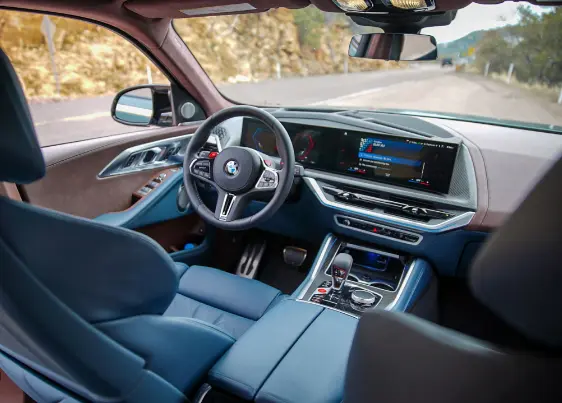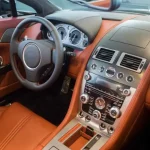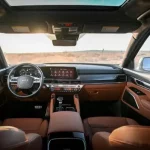Car interior design has come a long way from basic functionality to becoming a significant aspect of the driving experience. In recent years, innovative trends have redefined style within the realm of car interiors, turning them into luxurious, technologically advanced, and aesthetically pleasing spaces.
This article explores the exciting trends that are shaping the future of car interior design, enhancing both the driver’s and passengers’ experience.
1. Minimalism with Maximum Impact
Minimalism is no longer limited to home design; it has found its way into car interiors. Clean lines, uncluttered dashboards, and a focus on essential elements create an elegant and serene atmosphere. Minimalist interiors not only look stylish but also contribute to reduced distractions and improved safety.
**2. Sustainable Materials**
Sustainability is a driving force in contemporary car interior design. Manufacturers are increasingly using eco-friendly materials such as recycled plastics, organic fabrics, and sustainable wood veneers. These materials not only reduce the environmental footprint but also add a sense of ethical luxury to car interiors.
**3. Seamless Connectivity**
The integration of advanced technology has become a hallmark of modern car interiors. Infotainment systems are more intuitive, responsive, and user-friendly than ever before. Touchscreen displays, voice recognition, and smartphone integration allow drivers to stay connected while keeping their focus on the road.
**4. Ambient Lighting**
Ambient lighting has evolved beyond functional illumination to become an integral part of car interior aesthetics. LED lighting strips can be customized to create different moods and visual effects, transforming the interior into a personal sanctuary.
**5. High-End Audio Systems**
For audiophiles, car interiors have become concert halls on wheels. Premium audio systems from renowned brands provide immersive sound experiences. These systems use advanced speaker technology and precise tuning to deliver crystal-clear audio.
**6. Futuristic Interfaces**
Concept cars and prototypes often feature futuristic interfaces that are gradually making their way into production vehicles. These interfaces incorporate augmented reality displays, holographic touch controls, and even gesture recognition for a truly high-tech experience.
**7. Customization Options**
Car manufacturers now offer extensive customization options, allowing buyers to tailor their car interiors to their preferences. From selecting materials, colors, and finishes to configuring seating arrangements and storage solutions, personalization is key.
**8. Sustainable Luxury**
Luxury cars are incorporating sustainable elements into their interiors without compromising on opulence. You can find vegan leather, renewable wood accents, and eco-conscious manufacturing practices in high-end vehicles, marrying luxury with environmental responsibility.
**9. Artisanal Craftsmanship**
Craftsmanship has made a comeback in car interiors. Artisans painstakingly handcraft elements like wood veneers and leather seats, adding a touch of human artistry to the otherwise high-tech environments. These bespoke interiors are true works of art.
**10. Wellness Features**
Car interiors are increasingly focused on passenger well-being. This includes air purification systems, scented air diffusers, and even seats with massage and heating/cooling functions. These wellness features elevate the driving experience to a whole new level of comfort.
**11. Virtual Reality and Augmented Reality**
As we move toward autonomous driving, virtual reality (VR) and augmented reality (AR) are being explored for entertainment and information purposes. These technologies can transform the car interior into an immersive entertainment space or provide real-time navigation guidance on the windshield.
**12. Sustainable Luxury**
The juxtaposition of sustainability and luxury is a growing trend. Car interiors now feature eco-friendly materials such as natural fibers, recycled plastics, and even cork. These materials not only reduce the carbon footprint but also exude a sense of ethical opulence.
**Conclusion: Driving into the Future**
Car interior design has transcended its functional origins to become a canvas for innovation, luxury, and personal expression. The trends mentioned above represent a dynamic shift in the automotive industry, where car interiors are no longer just about transportation but also about providing an unforgettable and immersive experience. As we continue to push the boundaries of technology and design, the future of car interior design promises even more exciting and user-friendly innovations.


